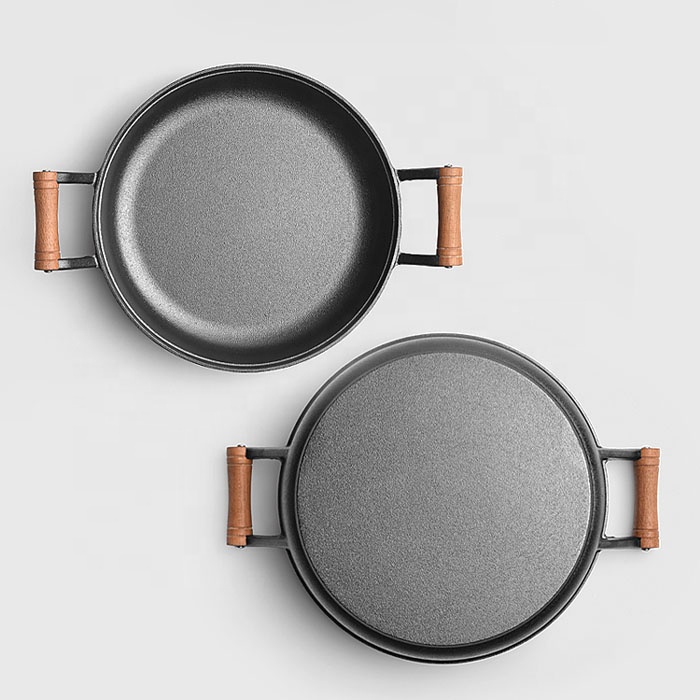
Best Cast Iron Skillets for Perfect BBQ Cooking Every Time
The Art of Cooking BBQ with a Cast Iron Skillet
When it comes to outdoor cooking, BBQ is a beloved tradition that many look forward to during warm weather. While grilling is often the go-to method for achieving that smoky flavor, using a cast iron skillet can elevate your BBQ game to an entirely new level. The versatility, heat retention, and ability to sear make a cast iron skillet an essential tool for both novice and seasoned grill masters.
Why Choose Cast Iron?
Cast iron skillets have been a staple in kitchens for generations. Their unique properties make them ideal for BBQ cooking. First, they can withstand high temperatures, making them perfect for searing meats and achieving that delightful crust. Unlike other materials, cast iron heats evenly, which reduces the risk of hot spots that can burn your food. Additionally, cast iron skillets are naturally non-stick once seasoned, meaning your food is less likely to stick, allowing for easy flipping and cleaning.
The Perfect Searing Surface
One of the most significant advantages of using a cast iron skillet for BBQ is its ability to sear meat flawlessly. When you heat your skillet over direct flame on a grill, it can reach temperatures higher than most stovetops. This capability is essential for locking in the juices of your meat while creating that sought-after charred exterior. Whether you’re cooking steak, burgers, or chicken, achieving a perfect sear can drastically enhance the flavor and texture of your dish.
To get started, preheat your cast iron skillet directly over the grill for about five minutes. Lightly oil the skillet with a high smoke-point oil such as avocado or canola, and then add your seasoned protein. Let it sear undisturbed for a few minutes until it develops a golden-brown crust before flipping. This method not only cooks the meat evenly but also imparts a smoky flavor that is synonymous with BBQ.
cast iron skillet for bbq

Versatility Beyond Meat
While searing is perhaps the star feature of a cast iron skillet, its versatility extends to a wide range of BBQ dishes. You can use it to prepare sides, sauces, and even desserts on the grill. For example, tossing seasonal vegetables in a cast iron skillet can yield perfectly roasted veggies with a slightly charred exterior. Simply add vegetables like bell peppers, zucchini, and corn, season them, and let them cook in the skillet until they reach your desired tenderness.
Furthermore, you can create delicious skillet sauces or gravies directly on the grill after your meat has finished cooking. Simply deglaze the pan with some wine or broth, scraping up the tasty bits stuck to the bottom, and add herbs and cream for a rich basted sauce.
Easy Cleanup and Maintenance
One of the concerns with barbecue cooking is the cleanup afterward. Cast iron skillets are surprisingly easy to care for. After cooking, allow the skillet to cool slightly before scraping out any food remnants with a spatula. You can rinse it under warm water and use a brush to clean it, but avoid soap as it can strip the seasoning. To maintain its non-stick surface, it's essential to dry the skillet thoroughly and apply a light coat of oil before storing it.
Conclusion
Incorporating a cast iron skillet into your BBQ arsenal can profoundly transform your cooking experience. Its ability to sear, versatility for various dishes, and ease of maintenance make it a valuable tool for any outdoor chef. Whether you are grilling up burgers for a backyard gathering or preparing a complete meal for family and friends, a cast iron skillet can help you achieve mouthwatering results that will impress your guests. Embrace the art of cooking BBQ with a cast iron skillet, and elevate your outdoor cooking to gourmet levels!
-
Season Cast Iron Perfectly with GPT-4 Turbo TipsNewsAug.01,2025
-
High Quality Cast Iron Cookware - Baixiang County Zhongda MachineryNewsAug.01,2025
-
Premium Cast Iron Pan: Durable & Perfect HeatNewsAug.01,2025
-
High Quality Kitchen Durable Black Round Cast Iron Cookware Pancake Crepe Pan-Baixiang County Zhongda Machinery Manufacturing Co., Ltd.NewsAug.01,2025
-
Cast Iron Cookware - Baixiang County Zhongda Machinery | Nonstick, Heat ResistanceNewsAug.01,2025
-
High Quality Kitchen Durable Black Round Cast Iron Cookware - Baixiang County Zhongda Machinery | Non-Stick, Heat Retention, DurableNewsJul.31,2025


